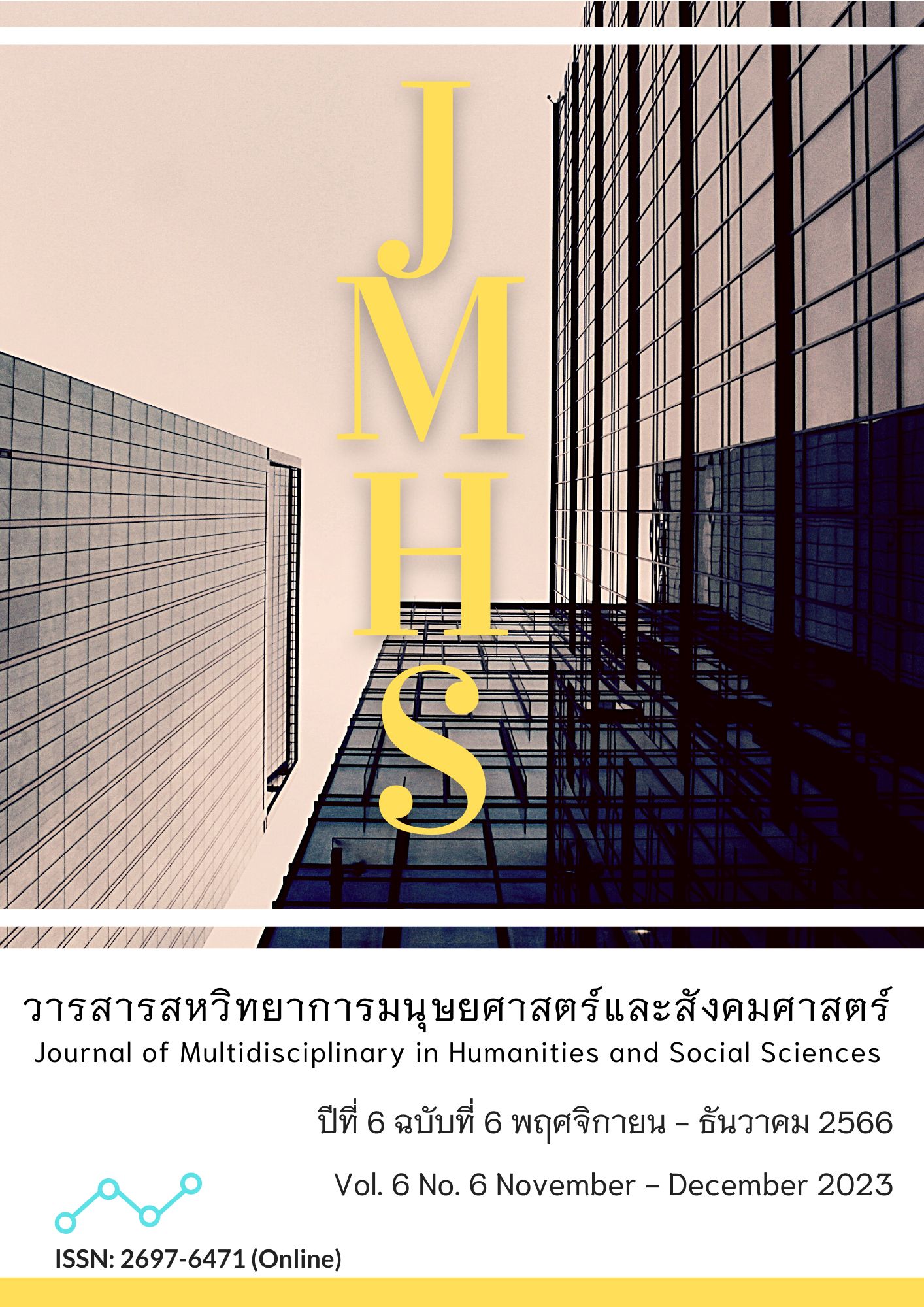Shiwan Kiln Earthenware Pot Innovation through the Integration of Traditional Kiln Making, Modernity, and Material
Main Article Content
Abstract
The Shiwan kiln, famous for its earthenware, is one of China's intangible cultural heritages due to its aesthetic value and rich traditional production techniques. However, the pots' design has remained the same, diminishing their appeal to younger generations. The objectives of this study were: 1) to analyze Shiwan kiln earthenware pots and how design can be used to foster innovation; 2) to synthesize innovative design directions that reflect a harmonious blend of tradition and modernity; and 3) to apply the new knowledge and create a new set of Shiwan kiln earthenware pots. Using a mixed-methods research methodology, the qualitative research investigated potential areas of innovation, including materials, methods, functions, shapes, culture, and values. Data were collected through participant observation and qualitative interviews. Quantitative methods were used to evaluate the exhibitions and seminars, and quantitative data was collected. It was found that using lithium phosphate instead of quartz sand in the traditional firing process enhanced the pot's strength and prolonged its service life. Based on the innovation of new appearance design, this study produced 68 pottery products, which improved convenience and re-attracted the attention of young audiences to Shiwan kiln pottery pots. A questionnaire survey was conducted among 300 participants, including exhibition visitors, seminar attendees, and ceramic market consumers. The respondents appreciated the cultural craftsmanship of the pots and suggested integrating traditional and modern designs. This study interviewed six ceramic experts, five intangible heritage scholars, and two marketing experts, providing insight into ceramic innovation. They agreed that the fusion of traditional and modern elements underpins this innovation, ensuring the ceramic tradition's continuity. These new products integrate traditional techniques with modernity, reviving youth interest in Shiwan kiln earthenware pots.
Article Details

This work is licensed under a Creative Commons Attribution-NonCommercial-NoDerivatives 4.0 International License.
Views and opinions appearing in the Journal it is the responsibility of the author of the article, and does not constitute the view and responsibility of the editorial team.
References
Bahn, S., Lee, C., Nam, C. S., & Yun, M. H. (2009). Incorporating affective customer needs for luxuriousness into product design attributes. Human Factors and Ergonomics in Manufacturing & Service Industries, 19(2), 105-127.
Bürdek, B. E. (2005). Design: History, theory and practice of product design. De Gruyter.
Caffyn, A. (2018). 16 Slow Tourism. In Special Interest Tourism: Concepts, Contexts and Cases (pp. 183).
Coutts, H. (2001). The art of ceramics: European ceramic design, 1500-1830. Yale University.
Dajun, Q. (n.d.). Guǎngdōng xīn yǔ [Guangdong New Language]. Zhonghua Book Company.
Deer, W. A., Howie, R. A., & Zussman, J. (2013). An introduction to the rock-forming minerals. Mineralogical Society of Great Britain and Ireland.
Emerson, R. M., Fretz, R. I., & Shaw, L. L. (2011). Writing ethnographic fieldnotes. University of Chicago.
Hein, A., Müller, N., & Kilikoglou, V. (2009). Great pots on fire: Thermal properties of archaeological cooking ware. In book: Vessels: inside and outside. Proceedings of the conference EMAC’07, 9th European meeting on ancient ceramics (pp.15-20). Hungarian National Museum, Budapest.
Johnson, R. B., & Onwuegbuzie, A. J. (2004). Mixed methods research: A research paradigm whose time has come. Educational researcher, 33(7), 14-26.
Khaldi, K. (2017). Quantitative, qualitative or mixed research: which research paradigm to use? Journal of Educational and Social Research, 7(2), 15.
Lewin, C. (2005). Elementary quantitative methods. In Research methods in the social sciences (pp. 215-225).
Naishen, L., Wen, S., & Hua, Z. (1980). Shí wān táocí de qǐyuán, tèdiǎn jí lìshǐ dìwèi [The Origin, Characteristics and Historical Position of Shiwan Ceramics]. Journal of Sun Yat-sen University (Social Science Edition), 20(3), 58-70. Retrieved from http://xuebao.sysu.edu.cn/Jweb_skb/CN/abstract/article_11481.shtml
Norman, D. A. (2004). Emotional design: Why we love (or hate) everyday things. Civitas Books.
Öcal, M. (2012). The role of tradition and everyday life in Scandinavian modern design(Unpublished Master's thesis). Izmir Institute of Technology.
Rodrigues, S. F. S., & da Costa, M. L. (2016). Phosphorus in archeological ceramics as evidence of the use of pots for cooking food. Applied Clay Science, 123, 224-231.
Stark, M. T. (2003). Current Issues in Ceramic Ethnoarchaeology. Journal of Archaeological Research, 11(3), 193-242. Retrieved from http://www.jstor.org/stable/41053198
Wenjia, Z. (2020). Xiàndàihuà bèijǐng xià de píngdìng shí qì yánjiū [The Study of Pingding Stoneware in Modernization Context] Unpublished Master's thesis). Jingdezhen Ceramic University.
Wenjin, J. (2017a). Míng qīng shí wān táo yè háng huì yánjiū [Research on Shiwan Pottery Guilds in Ming and Qing Dynasties]. Hanshan Normal University.
Wenjin, J. (2017b). Shí wān yáo yánjiū [Shiwan Kiln Research]. Guangdong People's Publishing House.
Xinliang, L. (2019). Kǒushù shí wān yáo [Oral Shiwan Pottery]. Guangxi Nationalities Publishing House.
Yanjuan, L. (2011). Shí wān lóng yáo bǎohù chūtàn [Preliminary Discussion on the Protection of Shiwan Longyao]. Journal of Foshan Institute of Science and Technology (Social Science Edition), 29(4), 65-68.
Yunchuan, Z. (2007). Rìběn gōngyì wénhuà yǔ rìběn xiàndàihuà [Japanese Craft Culture and Japanese Modernization](Unpublished Doctoral dissertation). Chinese Academy of Arts.
Yuzi, X. (2014). Quánqiú huà bèijǐng xià “běntǔ huà” yǔ “běntǔ huà” shèjì cèlüè de zhuǎnbiàn [Changes in Design Strategies of "Localization" and "Localization" under the Background of Globalization](Unpublished Master's thesis). Central Academy of Fine Arts.


